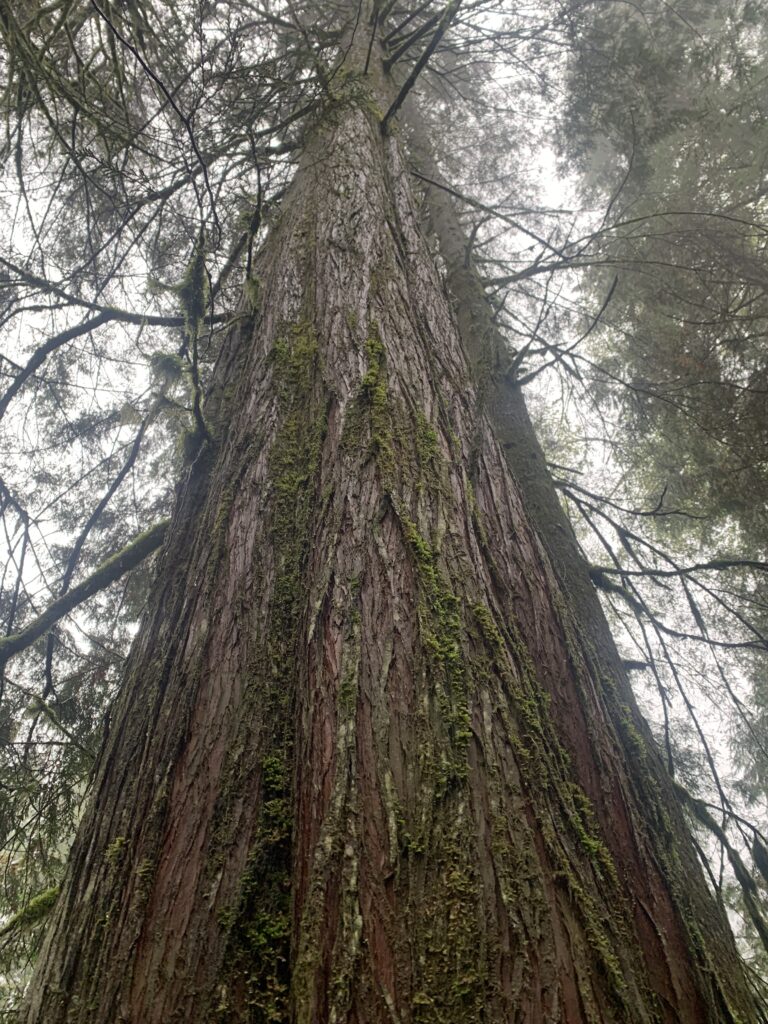9W68+RW North Vancouver, BC, Canada
To reflect upon the inquiry question “what stories live on the land,” I decided to take a walk in a local forest that is right beside my house. As I began on my journey, I brought my two dogs to accompany me Aussie and Oakley. As I walked further and further, I let my mind wander forgetting my original intentions. I began to think of the quote, “One’s connection to nature encourages reflection upon what healthy relationships look like” from the Indigenous course we took last semester (Wildcat et al. 2014). I began to wonder how can I respect myself, others, and nature? I let these questions sit with me as I hiked further into the woods. I felt a sense of healing and my mind drifted away from assignments and worries. Spending time in nature gives me energy and helps me clear my mind. When I am outdoors, all my troubles seem to slip away and nature acts as an escape from the busy structures of everyday life. Along my journey back to my house, I began to think of the distinction between land and place and what those words mean to me. How am I shaped by the land, and how can I learn with it? This led me to think about Styres et al. article “Towards a Pedagogy of Land” where they discussed what Aboriginal stories live on the land. It is important to not think about these stories in a linear timeframe, but instead, a layered building of stories intersecting with the past, present, and future (Styres et al., 2013).
Wildcat, M., et. al. (2014). Learning from the land: Indigenous land-based pedagogy and decolonization. Decolonization: Indigeneity, Education and Society, 3(3), i-xv. Available at: https://jps.library.utoronto.ca/index.php/des/article/view/2224

Devyn Gardiner
